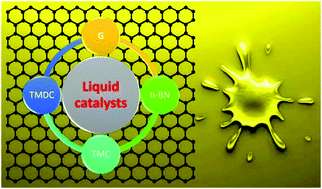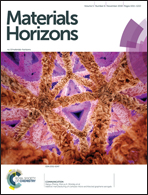Liquid catalysts: an innovative solution to 2D materials in CVD processes
Abstract
Two-dimensional (2D) materials have attracted increasing research interest because of the abundant choice of materials with diverse and tunable electronic, optical, and chemical properties. To achieve these high expectations, methods for the scalable preparation of 2D materials must be developed. Chemical vapor deposition (CVD) has been widely used in the growth of 2D materials owing to its controllability, scalability and low-cost features. In CVD processes, catalysts play a critical role in modulating 2D materials. Solid catalysts have long been used because of their high catalytic activity and wide applicability. However, the surface defects of solid catalysts usually result in compromise of the quality of 2D materials. In light of the limitations, the pursuit of alternative versatile catalysts with preferred advantages is highly desired. As a rising star in the growth of 2D materials, liquid catalysts are proving to be extremely effective in improving the quality and enlarging the scale of as-grown 2D materials because of their ultra-smooth and fluent surface. Here, in this review, the development of liquid catalysts in growing 2D materials by the CVD method is comprehensively demonstrated, while their unique features together with their merits over solid catalysts are mainly emphasized. First, the employment of liquid catalysts in the growth of graphene is introduced, whereas the shape, orientation and size engineering of graphene are fully discussed. Second, recent progress in the growth of other 2D materials on liquid catalysts is further presented, demonstrating the great potential and generality of liquid catalysts. In this section, hexagonal boron nitride (h-BN), transitional metal dichalcogenides (TMDs), transitional metal carbides (TMCs) and post transitional metal sulfides on liquid catalysts are briefly displayed. Thirdly, the growth mechanism of 2D materials on liquid catalysts in the CVD process is thoroughly discussed to elucidate the unique features, offering a guideline for the growth of large-area and high-quality 2D materials. Finally, the remaining challenges and outlook of liquid catalysts are outlined.



 Please wait while we load your content...
Please wait while we load your content...